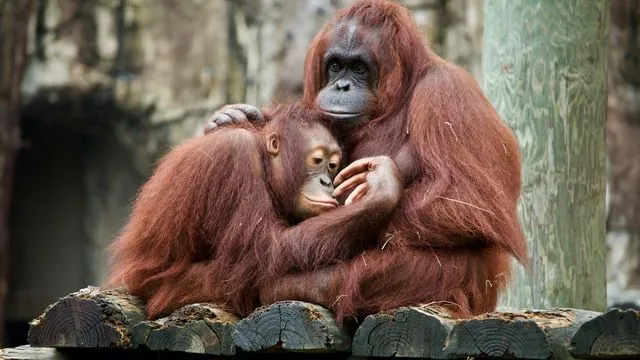
Unlocking the Secrets of Non-B DNA: How Ape Genomes Could Transform Our Understanding of Disease and Evolution
2025-04-28
Author: Olivia
A Groundbreaking Discovery in Genomic Research
Research has unveiled extraordinary insights into the role of non-B DNA—an alternative structural form of DNA that diverges from the classic double helix. This groundbreaking study, spearheaded by a team of biologists at Penn State University, reveals that non-B DNA structures play a pivotal role in regulating cellular processes and driving genome evolution, particularly in great apes.
Filling the Gaps in Ape Genomes
Until now, studying these unique DNA formations posed significant challenges due to their repetitive nature, which stymied efforts to sequence and analyze them accurately. Thanks to the innovative Telomere-to-Telomere (T2T) consortium, researchers have finally succeeded in producing complete genomes for humans and other great apes. This monumental achievement has allowed scientists to fill in the lingering gaps in genetic data, shining a light on the complex functions of non-B DNA.
The Past and Present of Genomic Sequencing
"When the human genome was first sequenced in 2001, about 8% was left incomplete due to limitations in technology," explained Kateryna Makova, the lead researcher and a revered Penn State professor. Fast forward to 2022 and 2023, and a concerted effort by the T2T consortium has revitalized our understanding of ape genomes, uncovering rich new regions of data previously thought lost.
Long-Read Sequencing Comes to the Rescue
Traditional short-read sequencing techniques often falter when faced with repetitive DNA patterns, akin to assembling a jigsaw puzzle with multiple identical pieces. The T2T method, leveraging long-read sequencing technologies, transforms this process by capturing much larger segments of DNA, allowing scientists to explore previously hidden non-B DNA regions.
Diverse Forms of Non-B DNA and Their Implications
Non-B DNA encompasses a variety of structures—like bent DNA, hairpins, G-quadruplexes, and Z-DNA—that emerge from specific repetitive sequence motifs. These configurations have been increasingly linked to essential cellular activities such as DNA replication, gene expression, and even the functioning of telomeres and centromeres. The researchers meticulously scoured T2T genomes to map out these non-B DNA motifs across a range of ape species, including humans, chimpanzees, bonobos, gorillas, and orangutans.
Patterns of Non-B DNA Across Great Apes
The findings reveal a captivating picture: the newly sequenced regions are abundant in non-B DNA motifs, showing striking similarity across various ape genomes. Interestingly, the gorilla genome emerged as having a particularly high percentage of these motifs, hinting at its unique evolutionary traits.
Non-B DNA and Disease Connections
These alternative DNA formations are not merely curiosities; they display higher mutation rates and an inherent instability that can lead to chromosomal rearrangements—a factor that may contribute to genetic disorders. For example, specific segments of satellite DNA have been linked to translocations in chromosome 21 associated with certain types of Down Syndrome. Notably, researchers found Z-DNA motifs to be alarmingly frequent in these vulnerable areas.
Future Directions: Exploring the Functionality of Non-B DNA
While the study provided compelling data regarding the presence of non-B DNA structures, the researchers acknowledge that further validation is necessary to fully confirm their functional roles. Makova emphasized that the formation of these structures is likely context-dependent, influenced by various factors, including cell type and developmental stage. This research marks a significant shift in understanding the genome, extending the conversation from DNA sequences to structural nuances, laying the groundwork for future studies into these fascinating genetic characteristics.









 Brasil (PT)
Brasil (PT)
 Canada (EN)
Canada (EN)
 Chile (ES)
Chile (ES)
 Česko (CS)
Česko (CS)
 대한민국 (KO)
대한민국 (KO)
 España (ES)
España (ES)
 France (FR)
France (FR)
 Hong Kong (EN)
Hong Kong (EN)
 Italia (IT)
Italia (IT)
 日本 (JA)
日本 (JA)
 Magyarország (HU)
Magyarország (HU)
 Norge (NO)
Norge (NO)
 Polska (PL)
Polska (PL)
 Schweiz (DE)
Schweiz (DE)
 Singapore (EN)
Singapore (EN)
 Sverige (SV)
Sverige (SV)
 Suomi (FI)
Suomi (FI)
 Türkiye (TR)
Türkiye (TR)
 الإمارات العربية المتحدة (AR)
الإمارات العربية المتحدة (AR)